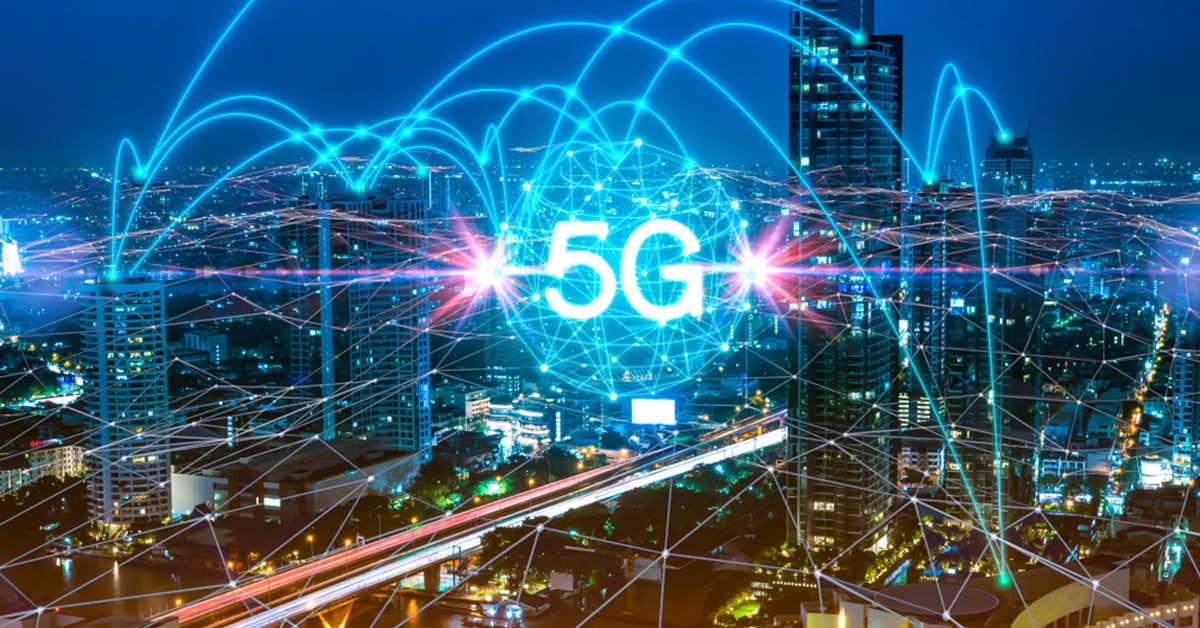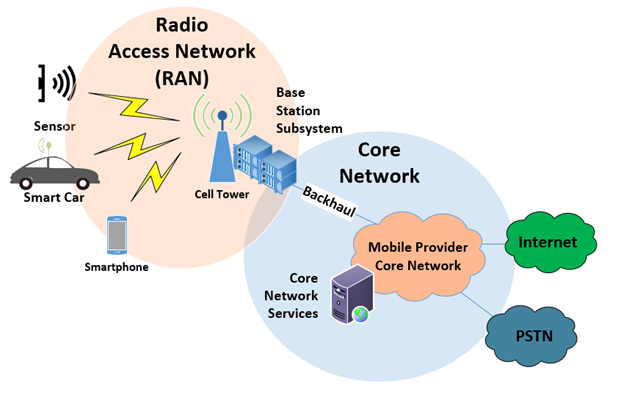
Over the past few years, we’ve been hearing a lot about 5G: the potential it promises, the phenomenal levels of network performance it can achieve, and the multitude of applications and services it will deliver. In this article, we review the basics of 5G and how it is poised to change the mobile communications landscape. We also examine the potential benefits it has to offer to enterprise-scale VoIP communications systems.
Introduction to 5G
As we mentioned in a previous article, 5G is the fifth generation of mobile communications networks and is characterized by an innovative architecture for both the core network and its wireless component. This architecture allows a full-fledged 5G network to deliver unprecedented network capabilities that enable a series of applications that only several years ago would have been considered science fiction.
5G as a set of technologies is defined by the International Telecommunications Union (ITU), a specialized agency of the United Nations that is involved in matters related to information and communications technologies. The ITU has defined the specific thresholds that must be met or exceeded for a mobile communications network to be considered 5G. These include:
- Maximum downlink data rates of 20 Gb/s
- Maximum uplink data rates of 10 Gb/s
- Minimum downlink data rates achieved in a dense urban environment 95% of the time: 100 Mb/s
- Minimum uplink data rates achieved in a dense urban environment 95% of the time: 50 Mb/s
- Densities exceeding one million connected devices per square kilometer (0.62 square mile)
- Bandwidth area densities of 10 Mb/s/m2
- Seamless handoff from one base station to another of devices moving at up to 500 km/h (310 mph)
Currently, the 3rd Generation Partnership Project, or 3GPP, which is a consortium of international bodies and corporations, is responsible for developing the standards and protocols that will achieve the above thresholds. 5G equipment vendors and telcos in turn develop equipment and network infrastructure that conforms to the 3GPP protocols, resulting in the rollout of 5G networks.
Major components of a 5G network
5G networks are composed of two major components: the 5G Radio Access Network (RAN) and the 5G core network.
5G RAN – This is the wireless component of the 5G network, also referred to as the “air interface,” and is composed of the base station equipment, including antennas, transceivers, and electronics. It is responsible for wirelessly connecting the user devices to the network. Conceptually, the 5G RAN is the part of the network that connects the user device, such as your 5G cell phone, to the core network. Technological innovations that have revolutionized the 5G RAN include:
- Massive and multi-user multiple-input multiple-output (M-MIMO and MU-MIMO) – These are technologies that take advantage of the physical characteristics of radio waves and the way they reflect and interfere with each other. With the appropriate computing power, multiple streams of data from a myriad of users can be transmitted simultaneously over the same radio wave to vastly increase the number of connected devices, as well as the throughput of each individual device.
- Beamforming – This is used in conjunction with MIMO technologies to focus transmission in a particular direction of a specific user device without the need to physically redirect antenna systems.
- The 5G RAN protocol stack – This is a fundamental redesign of the way the wireless network interface functions to allow for unprecedented wireless speeds and performance.
5G core network – This is the component of the 5G network that connects the RAN to the intended destination network, such as the internet or the PSTN. Technologies contributing to the high performance of the 5G core include:
- Virtualization – Network function virtualization (NFV) and software-defined networking (SDN) are two of the fundamental technologies put into extensive use on 5G networks in order to enable network slicing. This feature, unique to 5G, allows for the physical 5G infrastructure to be virtually segmented into distinct networks, each with its own network performance thresholds. This enables the deployment of applications requiring vastly different network capabilities and parameters over the same physical infrastructure.
The following diagram describes how the components of the 5G network fit together.

5G current rollout status
When we last wrote about 5G and its applications for UC almost two years ago, only a very limited number of cities in the U.S. had commercial 5G deployments. Today, the three major wireless providers in the country have already been able to supply 5G connectivity to over 200 million people—that’s over 60% of the population! This represents a phenomenal rate of development.
Innovations of 5G for VoIP services
Beyond extraordinary speeds and device densities, two of the major improvements over previous mobile communications network generations offered by 5G are the built-in and extensive quality of service (QoS) features and incredibly low latency.
These features are of particular interest to VoIP services because they are two of the network characteristics that VoIP requires in order to function faultlessly. 5G networks are expected to be used extensively for both end-device connectivity and as WAN services for enterprise networks. In either case, whether employed using a cloud-based or on-premises VoIP system, any voice services delivered over 5G networks will enjoy the required network thresholds to achieve flawless operation.
Conclusion
Today, we have only seen the tip of the iceberg as far as 5G networks are concerned. Over the coming years, we will see 5G become less about connecting the handset to the network and more about connecting other types of devices.
You may also like:
5G and its applications for UC









Comments